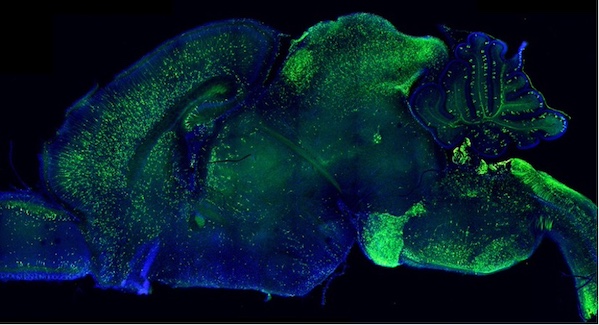Groundbreaking CRISPR Screen Technology Rapidly Determines Disease Mechanism from Tissues
May 23, 2024
Source: drugdu
 307
307
 Thanks to over a decade of advancements in human genetics, scientists have compiled extensive lists of genetic variations linked to a wide array of human diseases. However, understanding how a gene contributes to disease is quite different from knowing how to treat the disease. Each risk gene can affect multiple cell types, and pinpointing how these cell types—and even individual cells—influence a gene and its role in disease progression is crucial for developing effective treatments. Now, a new CRISPR screen method allows for the rapid analysis of brain cell types associated with key developmental genes, providing insights into the genetic and cellular mechanisms underlying various neurological disorders at an unprecedented level.
Thanks to over a decade of advancements in human genetics, scientists have compiled extensive lists of genetic variations linked to a wide array of human diseases. However, understanding how a gene contributes to disease is quite different from knowing how to treat the disease. Each risk gene can affect multiple cell types, and pinpointing how these cell types—and even individual cells—influence a gene and its role in disease progression is crucial for developing effective treatments. Now, a new CRISPR screen method allows for the rapid analysis of brain cell types associated with key developmental genes, providing insights into the genetic and cellular mechanisms underlying various neurological disorders at an unprecedented level.
Developed at Scripps Research (La Jolla, CA, USA), the new technique, called in vivo Perturb-seq, utilizes CRISPR-Cas9 technology combined with single-cell transcriptomic analysis as a readout to measure the effects of genomic alterations on individual cells. By employing CRISPR-Cas9, researchers can introduce specific changes into the genome during brain development and then analyze how these alterations impact individual cells, assessing thousands simultaneously. Previously, methods for inserting genetic perturbations into brain tissue were slow, often requiring days or weeks, which hampered the study of gene functions in neurodevelopment. However, this new screening method enables the rapid expression of perturbation agents in living cells within 48 hours, allowing researchers to quickly observe the roles of specific genes across different cell types within a very short time frame.
This method also offers unprecedented scalability—researchers were able to profile over 30,000 cells in a single experiment, a rate 10-20 times faster than traditional methods. In regions such as the cerebellum, they gathered tens of thousands of cells, reaching areas that previous labeling techniques could not. A pilot study using this innovative technology revealed that genetic perturbations produce varied effects across different cell types. This finding is significant as these affected cell types are often the targets for specific diseases or genetic variants. With this new technology, the team is poised to deepen their understanding of neuropsychiatric disorders and the relationship between specific cell types and brain regions. Going forward, they are keen on applying this technology to other cell types and organs to explore a broad spectrum of diseases in terms of tissue development and aging.
“We know that certain genetic variants in our genome can make us vulnerable or resilient towards different diseases, but which specific cell types are behind a disease? Which brain regions are susceptible to the genome mutations in those cells? These are the kinds of questions we're trying to answer,” said senior author Xin Jin, PhD, an assistant professor in the Department of Neuroscience at Scripps Research. “With this new technology, we want to build a more dynamic picture across brain region, across cell type, across the timing of disease development, and really start understanding how the disease happened—and how to design interventions.”
Source:
https://www.labmedica.com/pathology/articles/294801225/groundbreaking-crispr-screen-technology-rapidly-determines-disease-mechanism-from-tissues.html
Read more on
- Jinghong Medical Secures Series A Strategic Financing, Co-led by Venture Capital and Binhu Industrial Group with FTEC Capital as Exclusive Financial Advisor December 29, 2025
- Brazil to launch single-dose dengue vaccination program; Chinese companies help boost vaccine production capacity December 29, 2025
- China Biopharmaceutical’s innovative drug TQH3906 completes Phase II clinical trial. December 29, 2025
- Transcenta Group-B and EirGenix Reach Biopharmaceutical Manufacturing Collaboration Agreement December 29, 2025
- Sinovac Biotech’s adsorbent tetanus vaccine officially launched December 29, 2025
your submission has already been received.
OK
Subscribe
Please enter a valid Email address!
Submit
The most relevant industry news & insight will be sent to you every two weeks.



